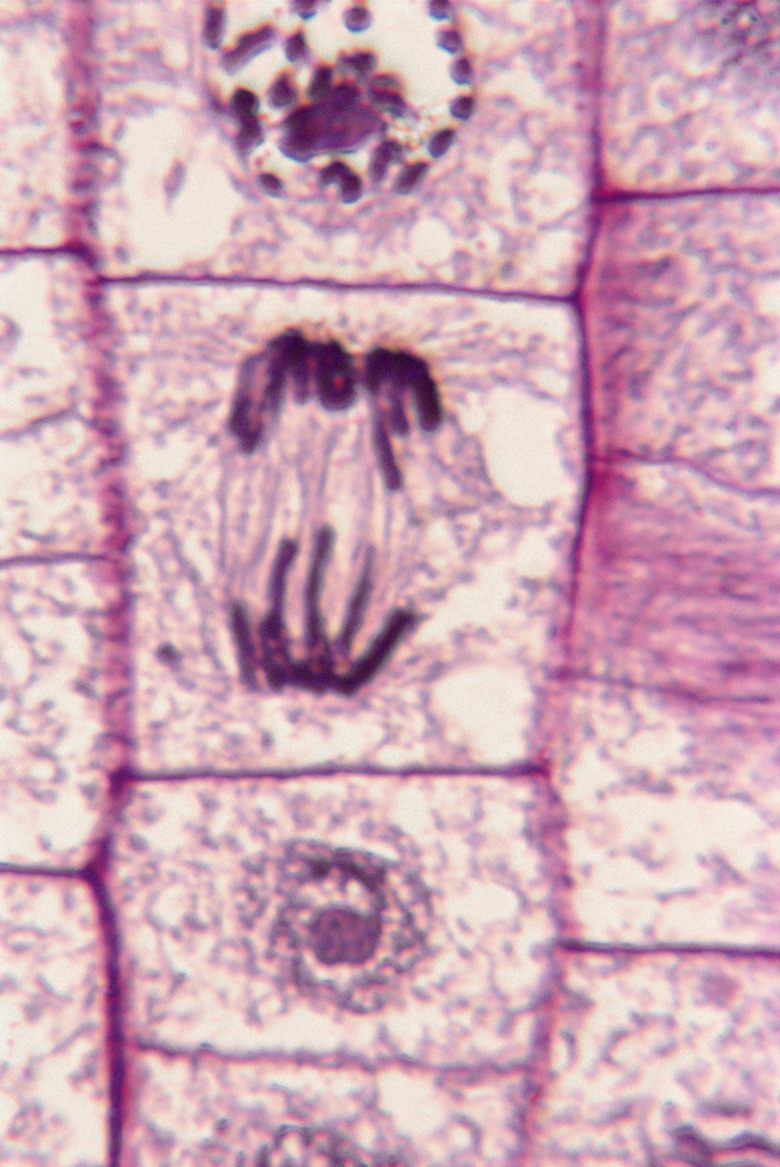What Is The First Step In Decoding Genetic Messages?
If you watch a cell for a while, you'll see it cycle between growth and division. During these cycles, a lot or work is needed to take care of the genetic code residing in a cell's DNA, or deoxyribonucleic acid. A couple of jobs, called replication and transcription, are warm-up acts that must occur before the cell starts unraveling genetic messages. The process called translation decodes genetic information, and the first step in translation is "initiation."
RNA
Ribonucleic acid, or RNA, is a molecule containing sugars. One of four different bases — ring-like molecules containing nitrogen — hangs off each sugar unit. The four bases are adenine (A), cytosine (C), guanine (G) and uracil (U). During translation, the batting order of bases in messenger RNA, or mRNA, controls the order of amino acids in proteins. The mRNA base lineup comes from DNA. Just about every trio of bases along the mRNA strand points to a particular amino acid. For example, the mRNA triplet AUG codes for the amino acid methionine, which is always the lead-off amino acid when the cell makes proteins.
Ribosomes
A ribosome is a tiny cell part made up of two subunits containing ribosomal RNA, or rRNA, and protein. Cells have many ribosomes, which are protein-making factories. Transfer RNA, or tRNA, acts like a tow truck that drags amino acids to the ribosome's protein assembly area. The ribosome has three different job sites for holding tRNA molecules. The P site grabs onto the first tRNA. The A site grabs the next tRNA needed and the P site moves the next amino acid to the growing protein. The emptied tRNA then moves to the E site where the ribosome kicks it to the curb. The P site is always set up to start with the amino acid methionine.
Preparing the Message
Some tidying up of the message needs to be done before translation. The cell must fix up the freshly-made mRNA before sending it to a ribosome. The front and rear ends get upgrades that protect the strand from attack by unfriendly enzymes. In addition, editor enzymes remove unnecessary portions from the mRNA strand. The tricked-out mRNA attaches to the small ribosomal subunit with the help of proteins called initiation factors. One factor gloms onto the mRNA's front end to make sure it's loaded into the ribosome first. The large ribosomal subunit joins the party, creating a fully-loaded ribosome that is ready for action. The ribosome-associated mashup of initiation factors, mRNA, and the first tRNA with methione attached is called the translation preinitiation complex.
Initiation
Translation begins when the preinitiation complex is lined up on the ribosome and the initial tRNA-methionine molecule is settled into the P site. To build the desired protein, appropriate amino acids need to be recruited and bound, in the correct sequence, in a chain. During the elongation phase, the ribosome travels down the mRNA strand, reading it and adding amino acids to the protein strand. The protein keeps getting longer until the ribosome hits a "stop" signal on the mRNA strand, at which point the ribosome spits out the new protein.
Cite This Article
MLA
Finance, Eric Bank, MBA, MS. "What Is The First Step In Decoding Genetic Messages?" sciencing.com, https://www.sciencing.com/first-step-decoding-genetic-messages-17122/. 24 April 2017.
APA
Finance, Eric Bank, MBA, MS. (2017, April 24). What Is The First Step In Decoding Genetic Messages?. sciencing.com. Retrieved from https://www.sciencing.com/first-step-decoding-genetic-messages-17122/
Chicago
Finance, Eric Bank, MBA, MS. What Is The First Step In Decoding Genetic Messages? last modified August 30, 2022. https://www.sciencing.com/first-step-decoding-genetic-messages-17122/
